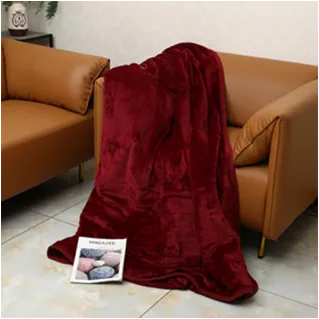
Nov . 04, 2024 11:24 Back to list
Understanding the Electric Costs of Using a Heating Blanket for Cozy Comfort
Understanding the Cost of Heating Blankets A Comprehensive Guide
As the colder months approach, many individuals seek ways to stay warm and comfortable at home. One popular option is the heating blanket, which raises the temperature of your bed, ensuring a cozy night’s sleep. However, while these electric blankets provide undeniable comfort, it's essential to understand their operational costs to make informed decisions. This article delves into the factors that influence the electricity costs of heating blankets and offers tips for efficient usage.
How Electric Heating Blankets Work
Electric heating blankets are designed with insulated wiring that heats the blanket when electricity flows through it. Many models offer adjustable heat settings, allowing users to customize their warmth level according to their preferences. Typically, these blankets range in power consumption from 60 to 120 watts, depending on the model and heat settings used.
Calculating Heating Blanket Costs
To estimate the cost of running a heating blanket, you need to know the wattage of the blanket, the cost per kilowatt-hour (kWh) charged by your utility provider, and the duration of use.
1. Wattage As mentioned earlier, a heating blanket usually consumes between 60 to 120 watts. For calculation purposes, let’s assume an average usage of 90 watts. 2. Duration of Use Suppose you use the heating blanket for about 8 hours each night.
3. Electricity Cost The average cost of electricity varies by region, but for this discussion, let's assume a rate of $0.12 per kWh.
Using these figures, you can calculate the daily operating cost
- Convert watts to kilowatts 90 watts ÷ 1000 = 0.09 kW. - Calculate daily usage 0.09 kW × 8 hours = 0.72 kWh. - Calculate cost per night 0.72 kWh × $0.12 = $0.0864.
heating blanket electric cost

Thus, running the heating blanket would cost approximately 8.64 cents per night. Over a month (30 days), this totals about $2.59, making it a relatively economical option for staying warm.
Factors Influencing Costs
1. Blanket Features High-tech blankets often come with additional features like timers, automatic shut-off, or dual controllers, which can affect overall consumption. While these features enhance convenience and safety, it’s worth checking how they impact power usage.
2. Heat Settings Using a higher heat setting will obviously consume more energy. To save on costs, consider starting on a higher setting for quick warmth and then switching to a lower setting.
3. Insulation The insulation of your home and the efficiency of your other heating systems can influence how much you rely on an electric blanket. In well-insulated homes, you might need the blanket for shorter durations.
4. Usage Patterns If you use the blanket every night or only occasionally, your total monthly costs can vary significantly.
Tips for Efficient Use
- Invest in a Timer A programmable timer can help manage usage, ensuring the blanket operates only when needed. - Layer Your Bedding Using the blanket alongside other bedding like thick comforters can minimize the need for high heat levels and reduce costs. - Choose Energy-Efficient Models Some blankets are designed to offer higher efficiency and lower energy consumption. Look for those with the Energy Star label or similar energy efficiency certifications.
Conclusion
Heating blankets can be a cost-effective way to enhance comfort during chilly nights. By understanding the factors that influence their electricity consumption and applying smart usage tips, you can enjoy the warmth of your blanket without significantly impacting your electricity bill. As always, consider your personal needs and energy costs before making any purchase to ensure the best choice for your comfort and budget.
-
Innovations and Applications of Modern Electric Heating Blankets
Jul.07,2025
-
Innovations and Applications of Electric Fleece Blanket Systems
Jul.07,2025
-
Functional and Cozy Solutions for Personalized Warmth
Jul.07,2025
-
Essential Comfort and Warmth Solutions: Heated Blanket Variants
Jul.07,2025
-
Enhancing Coziness with Warmth - Centric Blanket Solutions
Jul.07,2025
-
Enhancing Comfort and Warmth: Electric Blanket Solutions
Jul.07,2025
Realted Products



